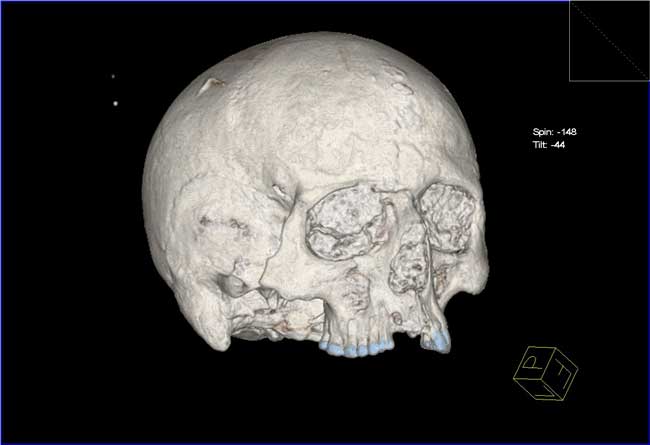Britain's Oldest Brain Found

Archaeologists have found what they say is the oldest brain ever discovered in Britain, or at least the shriveled remnant of one, in a decapitated skull that dates back more than 2,000 years.
Inside the skull, the scientists found "a yellow substance which scans showed to be shrunken, but brain-shaped," according to a University of York statement.
"I'm amazed and excited that scanning has shown structures which appear to be unequivocally of brain origin," said Philip Duffey, a neurologist at York Hospital who scanned the skull.
The researchers do not claim the brain is the oldest in the world, as some news reports suggested.
The skull was found in a muddy pit unearthed during excavations on the site of the University of York's campus expansion at Heslington East and is thought to have been a ritual offering. Nobody is sure how the brain remained preserved for so long.
Here's how the noggin was first noticed: York Archaeological Trust dig team member Rachel Cubitt reached in and, while she cleaned the soil-covered skull's outer surface, "she felt something move inside the cranium. Peering through the base of the skull, she spotted an unusual yellow substance."
"The survival of brain remains where no other soft tissues are preserved is extremely rare," said Sonia O'Connor, research fellow in archaeological sciences at the University of Bradford. "This brain is particularly exciting because it is very well preserved, even though it is the oldest recorded find of this type in the UK, and one of the earliest worldwide."
Get the world’s most fascinating discoveries delivered straight to your inbox.
O'Connor called it the oldest brain found in Britain and "one of the earliest worldwide."
One might think the oldest preserved brains would come from Egyptian mummies, but the minds of mummies were typically removed and discarded. "The brain was removed by carefully inserting special hooked instruments up through the nostrils in order to pull out bits of brain tissue," according to an Encyclopedia Smithsonian article on Egyptian mummies.
The mystery of the British brain's preservation could be cracked with more research. For instance, another oddity is that there was no skin or other tissue remaining, Duffey said.
"I think that it will be very important to establish how these structures have survived, whether there are traces of biological material within them and, if not, what is their composition," Duffey said.
It is not unheard of for soft biological tissue to be preserved over long periods of time. In 2005, scientists announced they had discovered 70-million-year-old Tyrannosaurus rex blood vessels. And the 5,200-year-old "Iceman" mummy, found in 1991 in the European Alps, has yielded a wealth of tissue.
- Mummy News
- All About the Human Brain
- Top 10 Unexplained Phenomena
Robert is an independent health and science journalist and writer based in Phoenix, Arizona. He is a former editor-in-chief of Live Science with over 20 years of experience as a reporter and editor. He has worked on websites such as Space.com and Tom's Guide, and is a contributor on Medium, covering how we age and how to optimize the mind and body through time. He has a journalism degree from Humboldt State University in California.
 Live Science Plus
Live Science Plus






